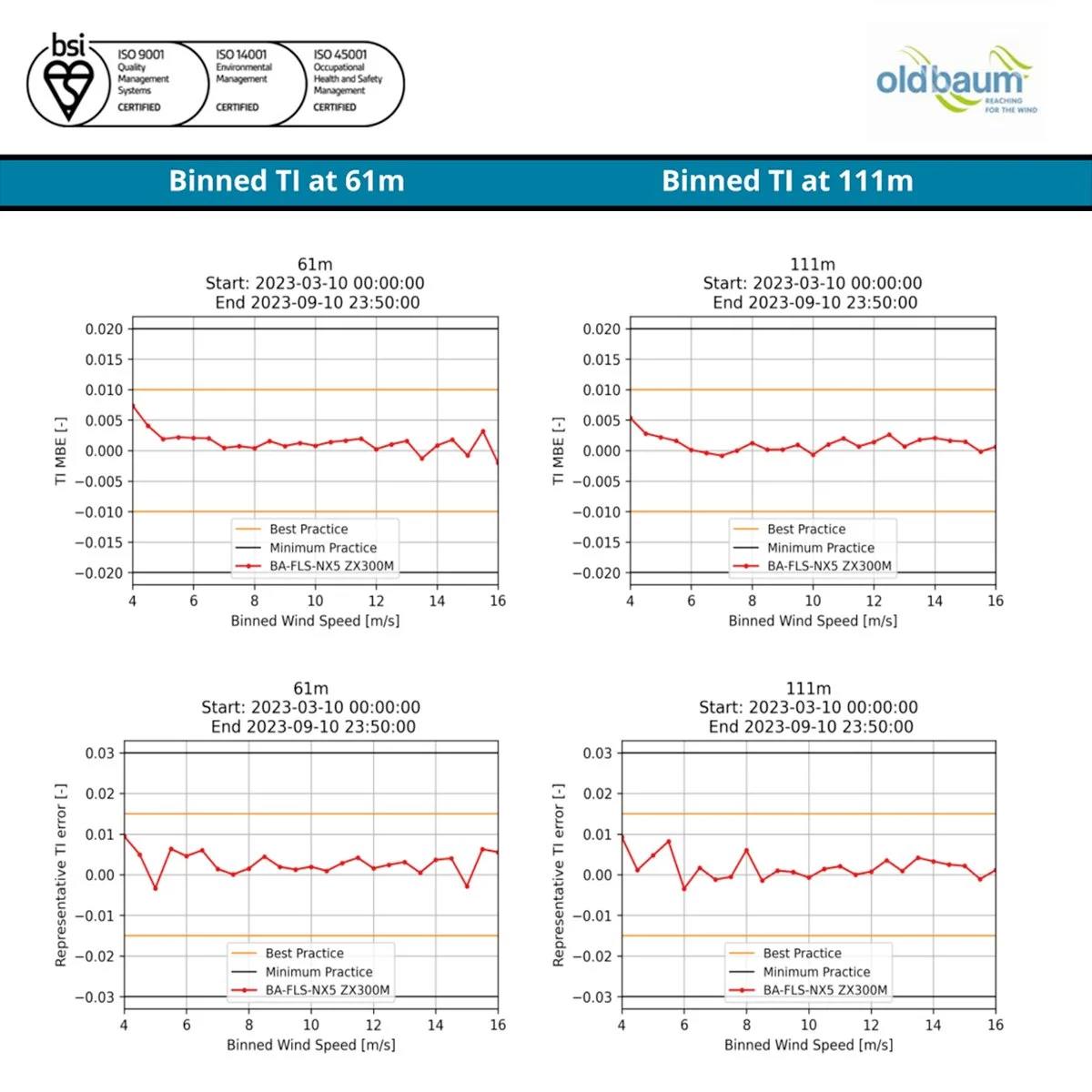Corrected TI for ZX 300M LiDAR on BA-FLS-NX5 meets the Best Practice according to CFARS guidelines
Recently, Blue Aspirations has been analyzing the Turbulence Intensity for ZX 300M LiDAR on BA-FLS-NX5 during Stage 2 verification. Significant progress has been made in the Turbulence Intensity correction algorithm. Oldbaum Services Limited issued a formal report about the Turbulence Intensity analysis. The report shows that the corrected Turbulence Intensity data during the 6-month campaign compared with Inch Cape met mast in Scotland meets the Best Practice according to CFARS guidelines with our self-developed motion compensation algorithm.
CFARS is a broad wind energy industry consortium on a mission to accelerate the adoption of remote sensing devices (LiDAR and SODAR) for wind energy applications. It recommends using non-relative Turbulence Intensity error metrics to quantify bin-wise errors in Turbulence Intensity measurements from the floating LiDAR system.
Table 1. Acceptance criteria for CFARS TI error metrics
For all verification heights, the Turbulence Intensity mean bias error and representative Turbulence Intensity error of BA-FLS-NX5 lies within the 0.01 (1%) error threshold compared with met mast. This shows very good agreement between BA-FLS-NX5 and met mast.
Figure 1. CFARS Binned TI statistics for BA-FLS-NX5 against met mast
In the context of the growing global demand for renewable energy, the siting and design of wind farms is becoming more complex. Blue Aspirations studies LiDAR measurement principle, motion compensation, and other complex factors, and constantly optimizes the algorithm to adapt to various complex environments to provide customers with more scientific and accurate data services.


